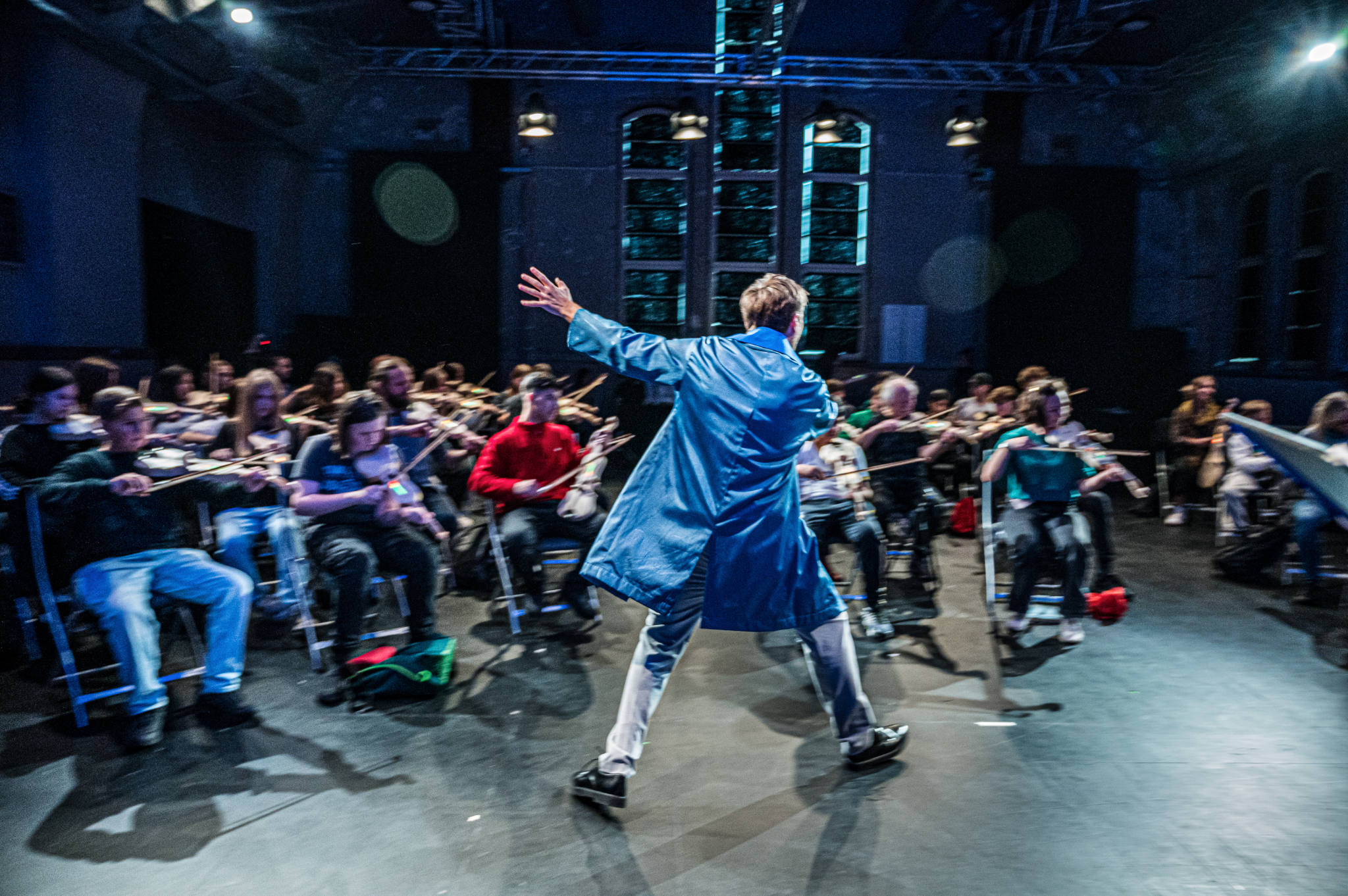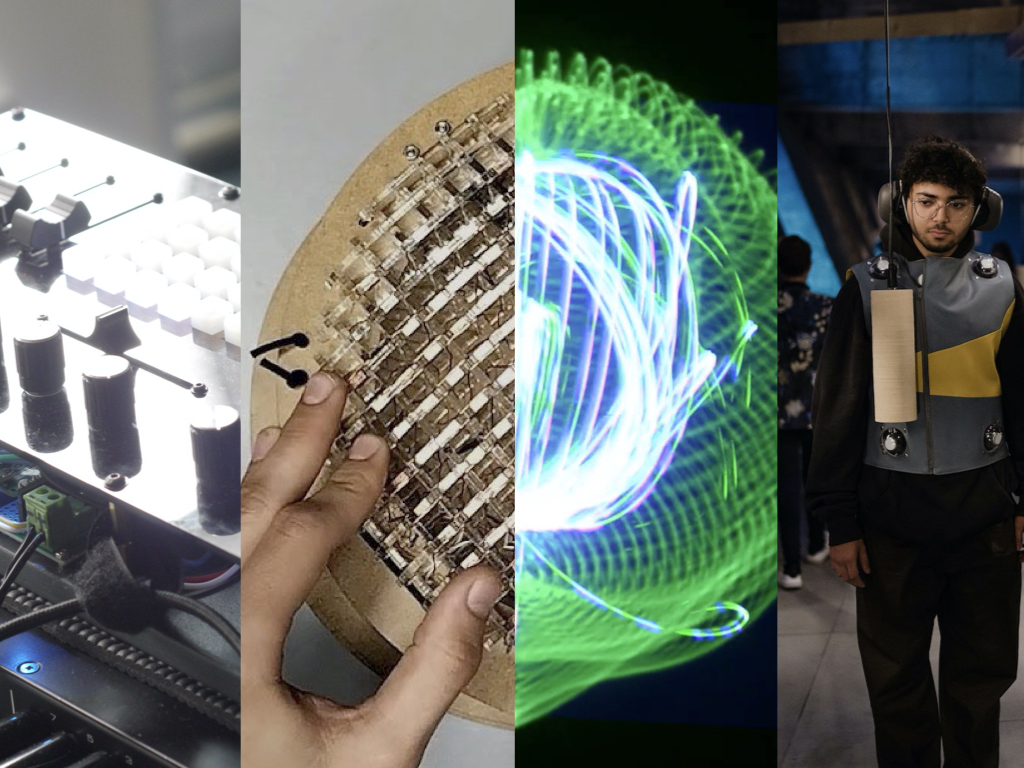Symphonie: Interactive theatre with Bela-powered instruments
Placing the audience in the heart of the action
Symphonie is an interactive play that is a collaboration between director Anna Vera Kelle and art and technology duo Kobakant (Mika Satomi and Hannah Perner-Wilson). It debuted in 2023 at Theater Strahl in Berlin, and continues to run through November 2025 (click here to book tickets).
In Symphonie, each member of the audience plays a Bela-powered instrument connected to a network, placing the spectators into an orchestra at the centre of a story about power, inclusion and community.
The Play and the Role of Instruments
Symphonie was developed by Kelle and Kobakant over the course of a year. Inspired by an account of discrimination within the Berlin school system, Symphonie uses the orchestra as a metaphor for belonging, and not belonging. The audience is the orchestra at the centre of the story, witnessing a series of character interactions in which some parts of the group are favoured over others.
When the audience enters the theatre, the space is set up in an orchestral arrangement, with chairs on the floor facing the front of the room. You can sit in any available seat, each paired with a stylised violin, viola or cello. When the play starts, the audience is transformed from a passive group to active participants, with the instruments forming the basis of the play’s interaction and the orchestra that is the setting for the story. The instruments the audience are each assigned–a choice that was not made with much intention, and is more a matter of chance—determines whether they are favoured or rejected by the characters in the story.
The Design and Role of the Instruments
The instruments in Symphonie play a vital role, not only as functional digital musical instruments that require audience interaction, but also as plot devices that tell a story of their own.
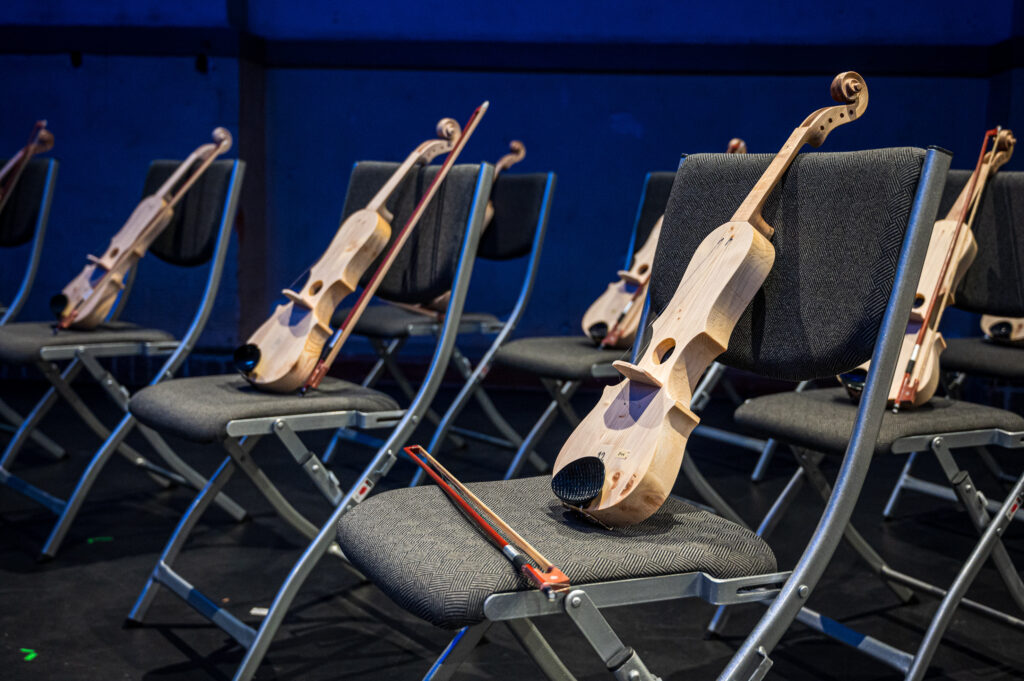
The instruments were designed and produced by Kobakant. Each instrument has a wooden body (produced by CNC), with a custom-designed PCB inside sporting a Bela Mini system and two rows of LEDs. The instruments are played in broadly the same way, by pressing down strings and exciting them with a bow, but differ though their body sizes and the sound they produce, which is in three separate pitch ranges.
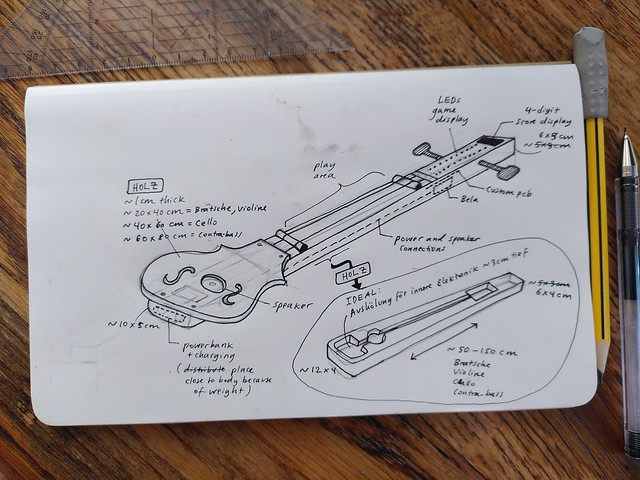
The front of each instrument has two channels carved on the inside, allowing each row of LEDs to shine through the front of the instrument when they are lit, but remain invisible otherwise. These LEDs show the player when the instrument is active and which string to play. Each instrument is accompanied by a bow, with two strands of conductive thread embedded in the bow hairs. When the player grasps the bow and touches it to one of their instrument’s two strings, the circuit is completed and the instrument produces a sound. The notes are pre-determined, but the player has to trigger each one, thereby playing together.

As well as the instruments dividing the audience into three groups, they also transform all of the spectators into active participants.
During the play there are many points where the audience is treated like an orchestra and expected to pick up and “play” these instruments. There’s no training, except a moment when we take our seats to pick up the bow and the instrument and try to make a sound.
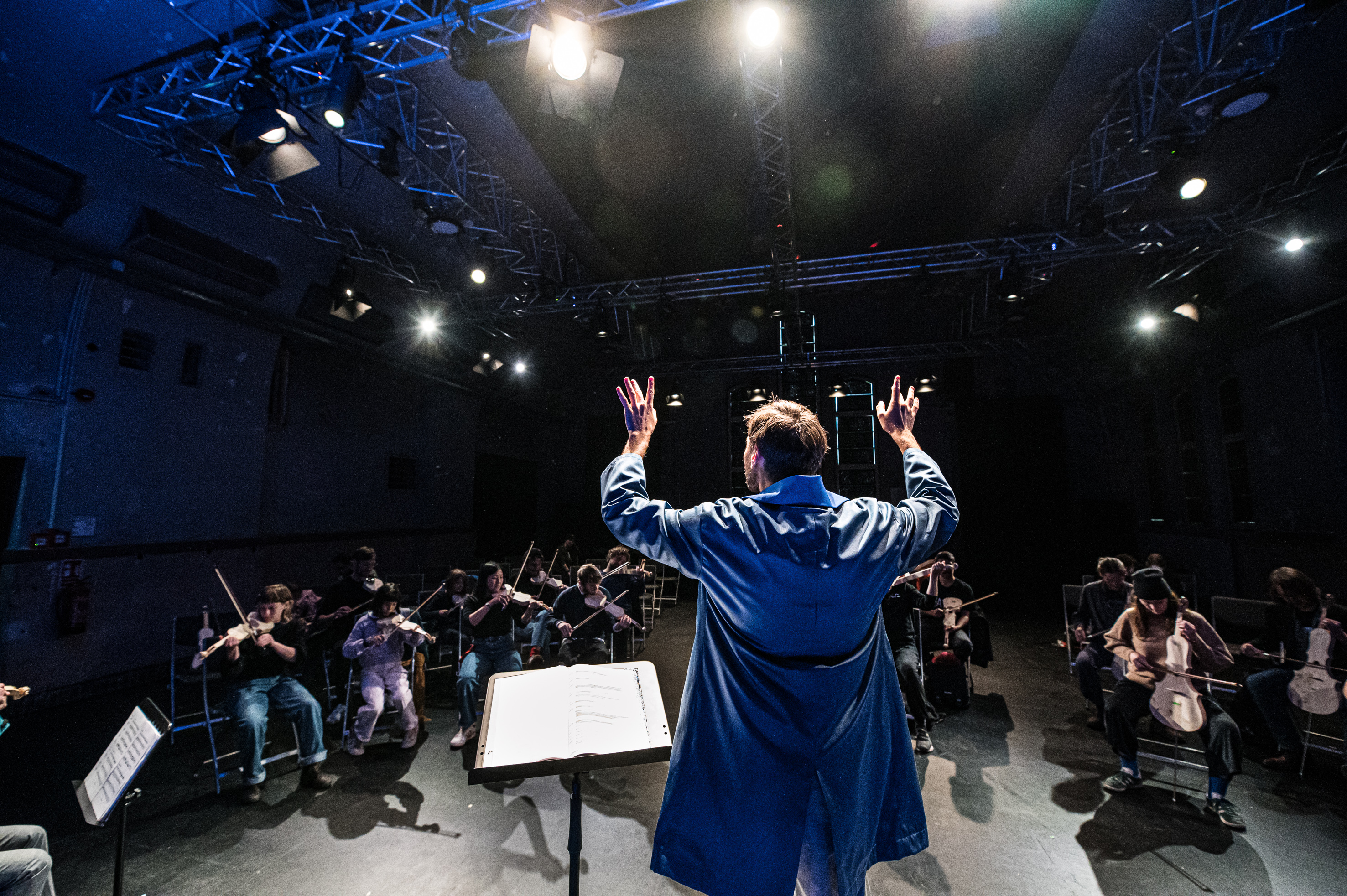
Playing them is surprisingly easy; we’ve all seen stringed instruments before, and even if we’ve never played one, we have some idea how they’re supposed to work. What is surprising is how satisfying these instruments are to play. When the conductor gives the signal to start and the audience starts to play, each instrument’s neck is illuminated from the inside when one of its strings is active. This makes it easy for the player to feel like they’re playing along, so much that it feels like you have to keep time and act like an orchestra.
Overlaid on top of the dynamic of being part of an orchestra is the relationship of the ensemble to the action of the play’s plot. Throughout the play the audience is instructed over and over to sit up straight and get ready, start, and the flow is soon interrupted by the talking, debating, and squabbling of the characters, which we can only sit there and observe until we’re told to get ready again. In this way, it feels very realistic; anyone who’s played in an orchestra will be familiar with the dynamic.
Catch Symphonie this summer at Theater Strahl
Symphonie is playing from July to November 2025 at Theater Strahl in Berlin. Visit the Symphonie web page for more information and to book tickets.
About the Artists
Mika Satomi and Hannah Perner-Wilson
Since 2006 Mika Satomi and Hannah Perner-Wilson have used electronics and textiles to comment on technological aspects of “high-tech” society, often utilising wearable technology and e-textiles.
Learn more at their website.
Anna Vere Kelle
Anna Vera Kelle is a director who has worked at institutions including Theater der jungen Welt Leipzig, Neues Theater Halle, Schauspiel Hannover, Staatstheater Kassel and regularly at Theater Strahl Berlin. Her studies focused intensively on digital technologies and participatory formats in theatre.
Learn more on her website.

